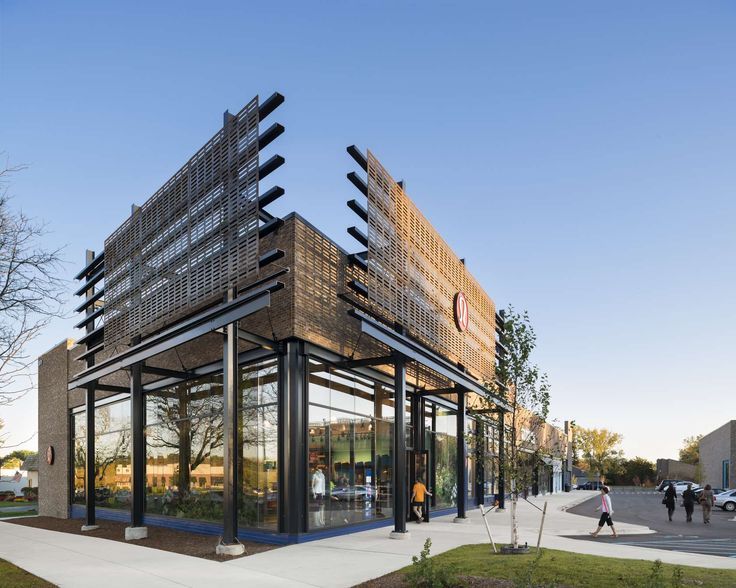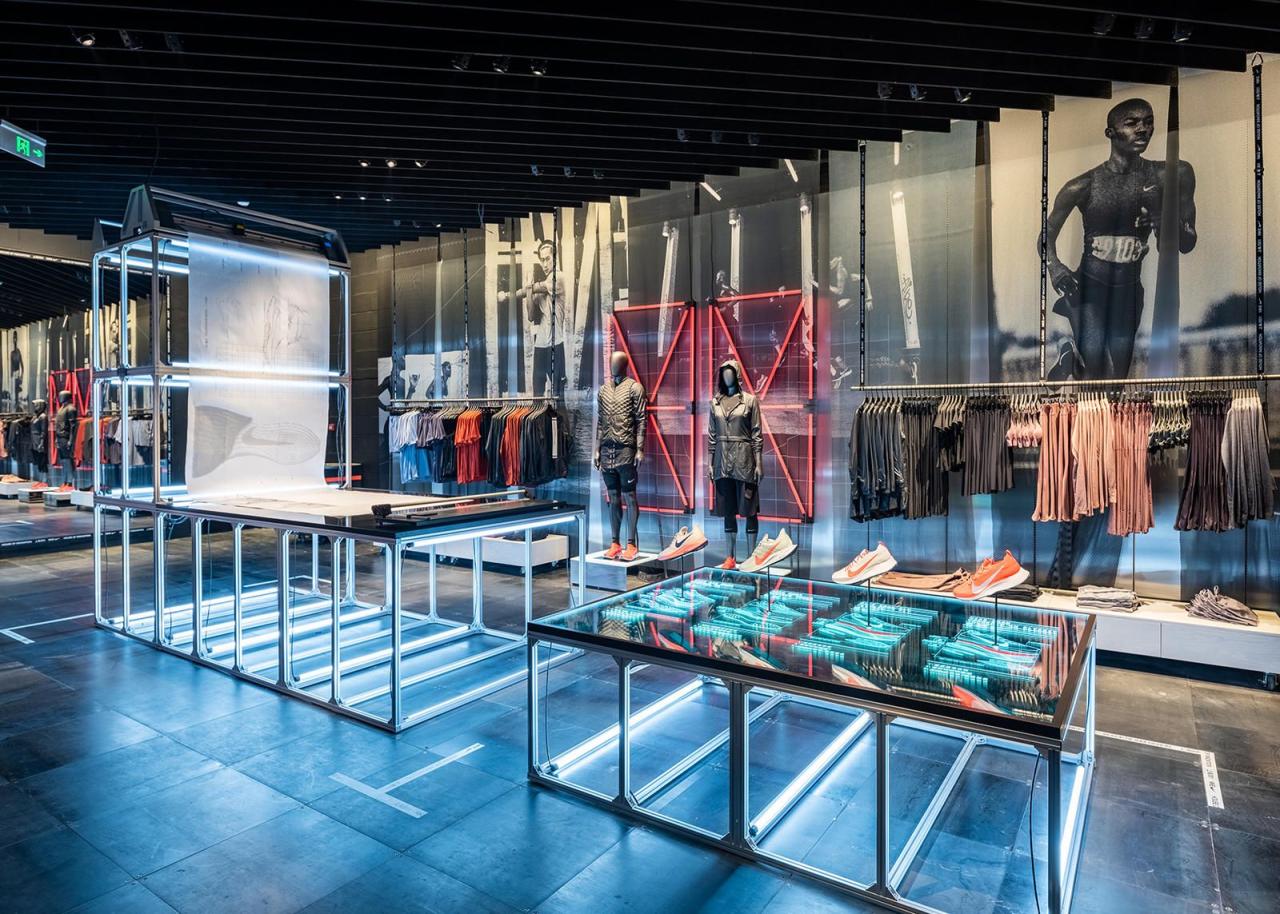In today’s fast-paced world, the retail landscape is undergoing a significant transformation driven by technological advancements and changing consumer behaviors. Retail innovation is not just a buzzword; it’s a critical factor that reshapes shopping experiences, making them more personalized, efficient, and engaging. This comprehensive exploration delves into the various facets of retail innovation, highlighting how it revolutionizes the way we shop and interact with brands.
Retail has come a long way from traditional brick-and-mortar stores to the omnichannel experiences we see today. The integration of online and offline platforms has created a seamless shopping journey for consumers. This evolution is propelled by several key innovations:
A. E-commerce Integration The rise of e-commerce has fundamentally changed consumer expectations. Shoppers now demand the convenience of purchasing products online with the assurance of quality and timely delivery. Retailers have responded by developing robust online platforms that complement their physical stores.
B. Mobile Commerce (M-Commerce) With the proliferation of smartphones, mobile commerce has become a vital component of retail strategy. Mobile apps and responsive websites enable consumers to shop anytime, anywhere, enhancing accessibility and driving sales.
C. Social Commerce Social media platforms have emerged as powerful sales channels. Retailers leverage platforms like Instagram, Facebook, and TikTok to showcase products, engage with customers, and facilitate direct purchases, blurring the lines between social interaction and shopping.
Technological Innovations Enhancing Retail
Technology plays a pivotal role in modernizing retail operations and enhancing customer experiences. Several technological advancements are at the forefront of this transformation:
A. Artificial Intelligence (AI) and Machine Learning AI-driven solutions analyze consumer data to provide personalized recommendations, optimize inventory management, and enhance customer service through chatbots. Machine learning algorithms predict trends and consumer preferences, enabling retailers to make informed decisions.
B. Augmented Reality (AR) and Virtual Reality (VR) AR and VR technologies offer immersive shopping experiences. Customers can virtually try on clothes, visualize furniture in their homes, or explore products in 3D, bridging the gap between online and physical shopping.
C. Internet of Things (IoT) IoT devices, such as smart shelves and connected kiosks, collect real-time data on inventory levels and customer interactions. This information helps retailers streamline operations, reduce costs, and improve the overall shopping experience.
D. Blockchain Technology Blockchain ensures transparency and security in transactions. It helps in authenticating products, managing supply chains, and protecting consumer data, thereby building trust between retailers and customers.
Personalization: The Key to Customer Loyalty
Personalization is no longer a luxury but a necessity in today’s competitive retail environment. Consumers expect tailored experiences that cater to their unique preferences and needs. Retailers achieve this through:
A. Data Analytics By harnessing data analytics, retailers gain insights into customer behavior, purchase history, and preferences. This data drives personalized marketing campaigns and product recommendations, enhancing the relevance of offerings.
B. Customized Marketing Personalized marketing strategies, such as targeted emails and personalized advertisements, resonate more with consumers. They feel valued and understood, which increases the likelihood of repeat purchases.
C. Loyalty Programs Innovative loyalty programs reward customers based on their individual shopping patterns. These programs foster a sense of exclusivity and encourage long-term loyalty.
Omnichannel Retailing: Creating Seamless Experiences
Omnichannel retailing integrates various shopping channels to provide a unified customer experience. This approach ensures consistency across online and offline platforms, allowing customers to switch between channels effortlessly. Key aspects include:
A. Unified Inventory Management Centralized inventory systems provide real-time visibility across all sales channels. This ensures accurate stock levels and prevents issues like stockouts or overstocking.
B. Consistent Branding Maintaining consistent branding and messaging across all channels reinforces brand identity and trust. Whether a customer shops online, in-store, or via mobile, the experience remains cohesive.
C. Flexible Fulfillment Options Offering multiple fulfillment options, such as buy online pick up in-store (BOPIS), curbside pickup, and same-day delivery, caters to diverse customer preferences and enhances convenience.
Sustainable Retail Practices
Sustainability has become a crucial consideration for both retailers and consumers. Eco-friendly practices not only contribute to environmental preservation but also resonate with socially conscious consumers. Sustainable retail innovations include:
A. Eco-friendly Packaging Reducing plastic use and adopting biodegradable or recyclable packaging materials minimize environmental impact. Retailers also encourage customers to reuse packaging, promoting sustainability.
B. Ethical Sourcing Ensuring that products are sourced ethically, with fair labor practices and environmentally responsible methods, builds consumer trust and supports sustainable development.
C. Energy-efficient Operations Implementing energy-efficient technologies in stores, such as LED lighting and smart HVAC systems, reduces carbon footprints and operational costs.
Enhancing In-store Experiences
While online shopping continues to grow, physical stores remain relevant by offering unique, experiential elements that online platforms cannot replicate. Enhancements in in-store experiences include:
A. Interactive Displays Digital displays and interactive kiosks engage customers by providing additional product information, reviews, and multimedia content, making the shopping experience more informative and enjoyable.
B. In-store Events Hosting events, workshops, and product demonstrations attracts foot traffic and creates a community around the brand. These events foster deeper connections between retailers and customers.
C. Smart Checkout Solutions Streamlined checkout processes, such as mobile payment options and self-service kiosks, reduce wait times and improve customer satisfaction.
The Role of Big Data in Retail
Big data analytics is instrumental in driving retail innovation. By processing vast amounts of data, retailers can uncover patterns and insights that inform strategic decisions. Key applications of big data in retail include:
A. Predictive Analytics Predictive models forecast sales trends, inventory needs, and customer behaviors, enabling proactive management and strategic planning.
B. Customer Segmentation Big data allows for precise customer segmentation based on demographics, purchasing habits, and preferences. This segmentation facilitates targeted marketing and personalized offerings.
C. Supply Chain Optimization Analyzing data across the supply chain enhances efficiency, reduces costs, and ensures timely delivery of products, improving overall operational performance.

The Impact of 5G on Retail
The advent of 5G technology promises to revolutionize retail by providing faster and more reliable connectivity. The impact of 5G on retail includes:
A. Enhanced Mobile Experiences 5G enables high-speed mobile browsing, seamless video streaming, and interactive applications, enriching the mobile shopping experience.
B. Real-time Data Processing With 5G, retailers can process data in real-time, facilitating instant decision-making and improving responsiveness to market changes.
C. Advanced AR and VR Applications 5G supports more complex and immersive AR and VR experiences, allowing for more engaging and interactive shopping environments.
The Future of Retail: Trends to Watch
As retail continues to evolve, several emerging trends are set to shape the future of shopping:
A. Voice Commerce Voice-activated devices and virtual assistants make it easier for consumers to search for products, place orders, and manage their shopping lists through voice commands.
B. Subscription Services Subscription-based models offer convenience and predictability, providing consumers with regular deliveries of their favorite products while ensuring steady revenue streams for retailers.
C. Hyper-Personalization Advancements in AI and machine learning will enable even deeper levels of personalization, anticipating consumer needs and preferences with greater accuracy.
D. Autonomous Stores Unmanned stores equipped with advanced sensors and AI will offer seamless shopping experiences, where customers can walk in, pick up items, and leave without traditional checkout processes.
E. Circular Economy Initiatives Retailers are increasingly adopting circular economy practices, such as product recycling and resale, to promote sustainability and cater to environmentally conscious consumers.
Challenges in Retail Innovation
Despite the numerous benefits, retail innovation also presents several challenges that retailers must navigate:
A. High Implementation Costs Adopting new technologies and implementing innovative practices can be expensive, particularly for small and medium-sized enterprises (SMEs).
B. Data Privacy Concerns With increased data collection comes the responsibility to protect consumer information. Retailers must ensure robust data security measures to maintain trust and comply with regulations.
C. Integration of Systems Integrating new technologies with existing systems can be complex and may require significant adjustments to workflows and processes.
D. Keeping Up with Rapid Changes The fast pace of technological advancements means retailers must continually adapt to stay competitive, which can be resource-intensive.
Strategies for Successful Retail Innovation
To successfully navigate the landscape of retail innovation, retailers should adopt strategic approaches that align with their business goals and customer needs:
A. Customer-Centric Approach Prioritizing customer needs and preferences ensures that innovations enhance the shopping experience rather than complicate it.
B. Incremental Implementation Gradually implementing new technologies and practices allows retailers to manage costs and minimize disruptions while adapting to changes.
C. Collaboration and Partnerships Partnering with technology providers, startups, and other industry players can provide access to expertise and resources, fostering innovation.
D. Continuous Learning and Adaptation Staying informed about emerging trends and being willing to adapt strategies based on market feedback ensures ongoing relevance and competitiveness.

Case Studies: Retailers Leading the Innovation Charge
Several retailers have set benchmarks in innovation, demonstrating how to effectively transform shopping experiences:
A. Amazon Amazon’s relentless focus on customer convenience, from one-click shopping to same-day delivery, has redefined e-commerce standards. Innovations like Amazon Go stores, which utilize cashier-less technology, showcase the company’s commitment to seamless shopping experiences.
B. Walmart Walmart has invested heavily in technology to enhance its omnichannel presence. Initiatives like the Walmart+ subscription service and partnerships with tech companies for improved supply chain management highlight its innovative approach.
C. IKEA IKEA leverages augmented reality through its IKEA Place app, allowing customers to visualize furniture in their homes before making a purchase. This blend of technology and practical application enhances the customer decision-making process.
D. Nike Nike’s use of data analytics and personalized marketing through its Nike+ platform provides a tailored experience for customers, fostering loyalty and engagement.
Conclusion
Retail innovation is a dynamic force that continues to reshape the shopping landscape, driven by technological advancements and evolving consumer expectations. By embracing innovation, retailers can create more personalized, efficient, and engaging shopping experiences that not only meet but exceed customer expectations. As the retail environment becomes increasingly competitive, the ability to adapt and innovate will be crucial for success. Retailers that strategically implement new technologies, prioritize sustainability, and focus on customer-centric approaches will thrive in this ever-changing landscape, setting new standards for what shopping can be.


